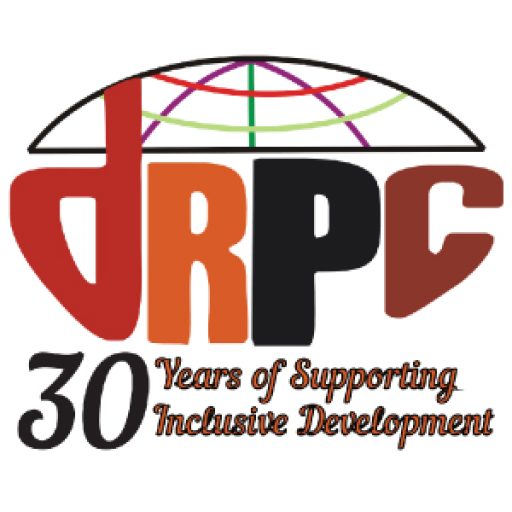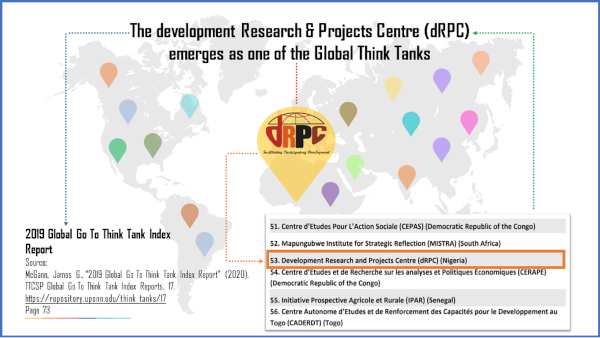The National Institute for Policy and Strategic Studies (NIPSS), mid-term report was part of the tasks for the participants of the Senior Executive Course 42. The results showed that high fertility, low mortality rates, poor investments in the health and education sectors as well as regional disparities are challenges affecting human capital development in Nigeria. Supported by the development Research and Projects Centre (dRPC), the mid-term report was part of a study commissioned by the Nigerian Government on how to utilize its population as an opportunity for the development of human capital.
Making the presentation in Jos, the Monitor General of SEC 42, Group Captain C.O. Olayera, disclosed that the aim of the mid-term presentation was to share the preliminary findings of SEC 42 study on Population Growth and Human Capital Development in Nigeria.
Findings on Population Growth
Nigeria has an average annual population growth rate between 2.6 and 2.8 percent. At this rate, Nigeria was projected to be the world’s third most populous country by the year 2050 with an estimated population of 402 Million, after China and India (US Census Bureau estimates).
Demographic Composition of the Population: The findings revealed an interesting dynamic compared to other African countries.
- Nigeria has a Total Fertility Rate of 5.4 compared with Kenya and South Africa that have fertility rates of 3.5 and 2.4 respectively.
- The Nigeria population pyramid showed that majority of the population lies between ages 0-14. The percentage of the population under 15 years is 43.5%. This indicates that the fertility rate of the country is high and implied a high dependency ratio.
- It also implied a large proportion of the population would soon be entering into the working age group.
- This sheer weight of population size will exert pressure on available social amenities and reduce the quality of life of the population.
- New job opportunities would therefore be required to meet up with the projected increase in labor force population
Drivers of Population Growth: The findings also showed that Nigeria’s population growth is driven by three factors namely; fertility rate, mortality rate and migration. However, among other factors, the ones with significant impact are;
- Fertility and mortality rates: the higher the fertility rate, the higher the population growth. The lower the mortality rate, the higher the Population growth.
- Nigeria has high fertility rate and low mortality rates. The mortality profile of Nigeria has also declined but is still at an unacceptable rate.
Regional variation in Population Growth rate: The findings established regional differences and factors affecting population growth are;
- The average Total Fertility Rate in the Northern region was about 5.8 percent compared to the average total fertility rate in the Southern region which was about 4.2 percent.
- The percentage of teenagers who have begun childbearing in North West was 28.5 percent compared to 5.5 percent in the South West.
- The percentage of married women using any method of family planning in the North West was 6.7 percent compared with 21.7% in the South-South.
Therefore, the SEC 42 participants are of the view that when it comes to policy intervention to address population growth, one size does not fit all across the 6 geo-political zones. In other words, there should be specific interventions tailored towards different regions.
Causes of Regional Variation
The SEC 42 found that the causes of Regional variations in Population growth include:
- level of Education
- Early Marriage
- Inadequate funding for family planning programs
- Contraceptive prevalent rate.
- Cultural resistance to family planning.
Other Findings on Population Growth were:
- There is an absence of reliable population data that will enable proper planning and efficient utilization of resources.
- There is lack of ‘One Stop Data Shopping Centre’ in Nigeria for all the population data required for Human Capital Development. There is no coordination among the many institutions responsible to gather and provide population data.
- There is also a problem with the Governance Architecture in Nigeria. The FGN ‘s policy on Population is outdated. The state governments do not have any policy on population and they are not bound to comply with the policy of the federal government on population by constitution. Therefore, vertical and horizontal fragmentation in the governance system is a major barrier to effective implementation of population policy.
- The political economy of population figures is a politically and economically sensitive subject matter making it difficult for coherent vertical and horizontal harmony across the tiers of the Government.
Findings on Human Capital Development: The SEC 42 also established other findings on Human Capital Development and these are;
Education:
- As at 2019, out-of-school children in the country was over 16 million (Out-of-primary-school children stood at 10 million, while children out-of-secondary-school are six million).
- Nigeria adult literacy rate was at level of 62 percent in 2018, while that of Ghana was 79.04 percent in the same year.
- The percentage of women with no education in the North West was 57.2 percent compared with that of South East at 14.2 percent.
- Primary and Secondary School National Attendance Ratio by Zone
- The Primary and Secondary School National attendance ratio in the North Central are 66.4 and 37.4 respectively compared with that of the South East which stands at 80 and 59 respectively. (Source: NPC and RTI 2011)
- There are only 15 scientists and engineers engaged in research and development per one million persons in Nigeria, compared to 158 in India, 168 in Brazil, 459 in China and 4,101 in the US (Aluko and Aluko, 2012).
Health
- According to UNICEF, Nigeria has the second highest burden of stunted children in the world, with a national prevalence rate of 32 percent of children under five.
- An estimated 2 million children in Nigeria suffer from severe acute malnutrition (SAM), but only two out of every 10 children affected is currently reached with treatment.
- Nigeria maternal mortality rate for 2017 was 917.00 at 0.86% while for Ghana it was 308.00, at 1.91%
- The current infant mortality rate for Nigeria in 2020 was 59.181 deaths per 1000 live births while for Ghana it is 33.701 deaths per 1000 live births.
- The life expectancy for Nigeria in 2019 was 54.49 years, while Ghana has 63.91 year as life expectancy.
If we disaggregate this by gender, the picture is even more depressing. In terms of HCD, the progress is not fast enough in Nigeria, because these figures are not really good. Nigeria has not been able to effectively harness the potential of population growth towards human capital development.
Further Findings of our Study on Human Capital Development revealed that:
- There is lack of clearly articulated HCD agenda in Nigeria. What we have now is rather a set of fragmented sectoral efforts that are aimed at HCD.
- Nigeria does not have a central coordinating agency and no specific HCD policy framework to set agenda on an annual basis along the key components of education, health and standard of living.
- Rather each component is being managed independent of each other under their respective sectoral policy frameworks. These segmented efforts lead to lack of effective coordination and synergy.
Conclusion:
In conclusion, the SEC 42 participants revealed that instead of the population growth of Nigeria becoming an asset, it is now a burden and a drag on the progress of achieving human capital development. Nigeria has an unmatched economic potential, but what becomes of that potential depends on the choices we make. I will like to quote Bill Gates for the speech he delivered at the Special National Economic Council during his visit to Nigeria in 2018.
‘’The most important choice you can make is to maximize your greatest resource, the Nigerian people. Nigeria will thrive when every Nigerian is able to thrive. If you invest in their health, education, and opportunities—the “human capital” we are talking about today—then they will lay the foundation for sustained prosperity. If you don’t, however, then it is very important to recognize that there will be a sharp limit on how much the country can grow.’’

